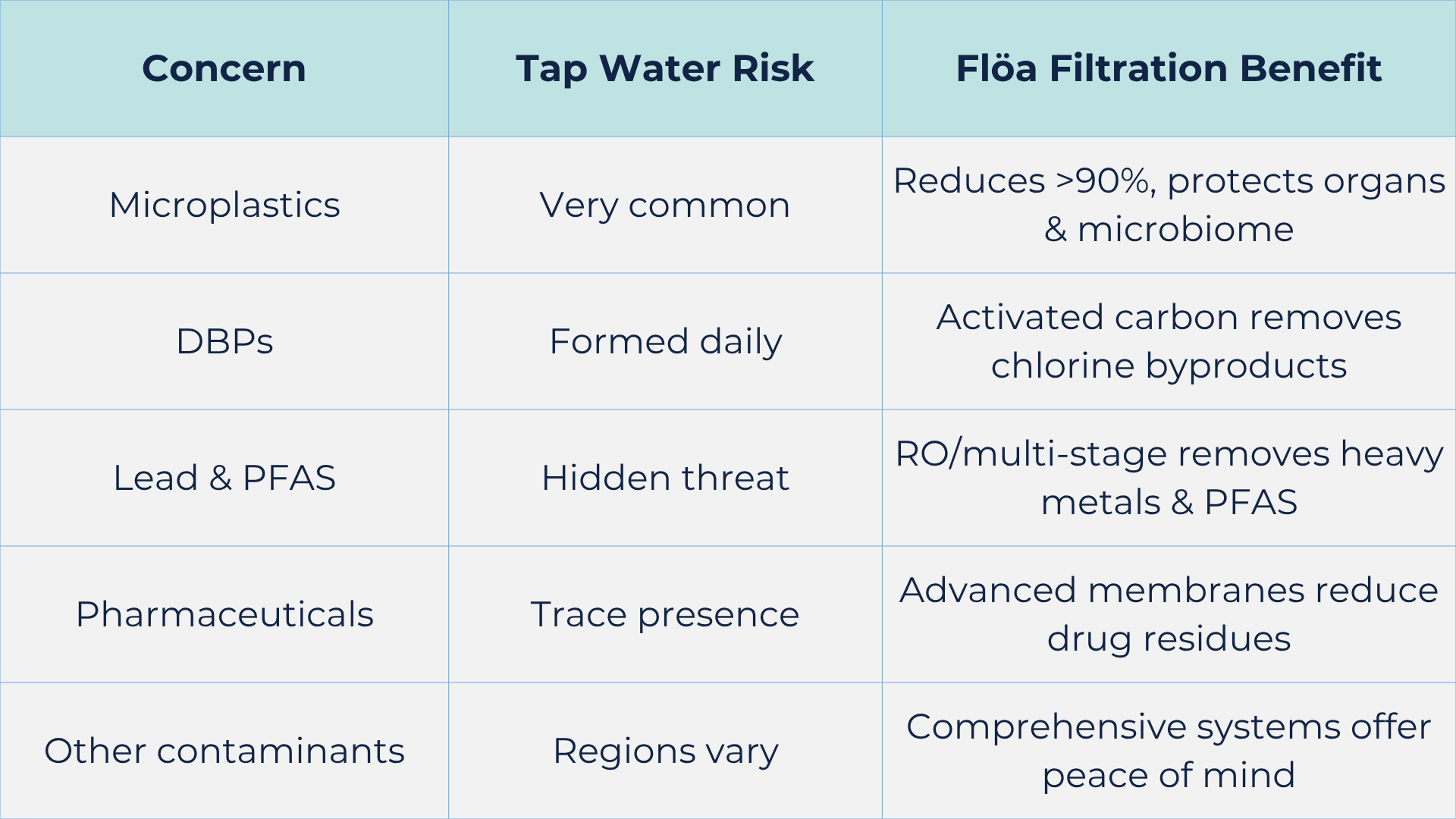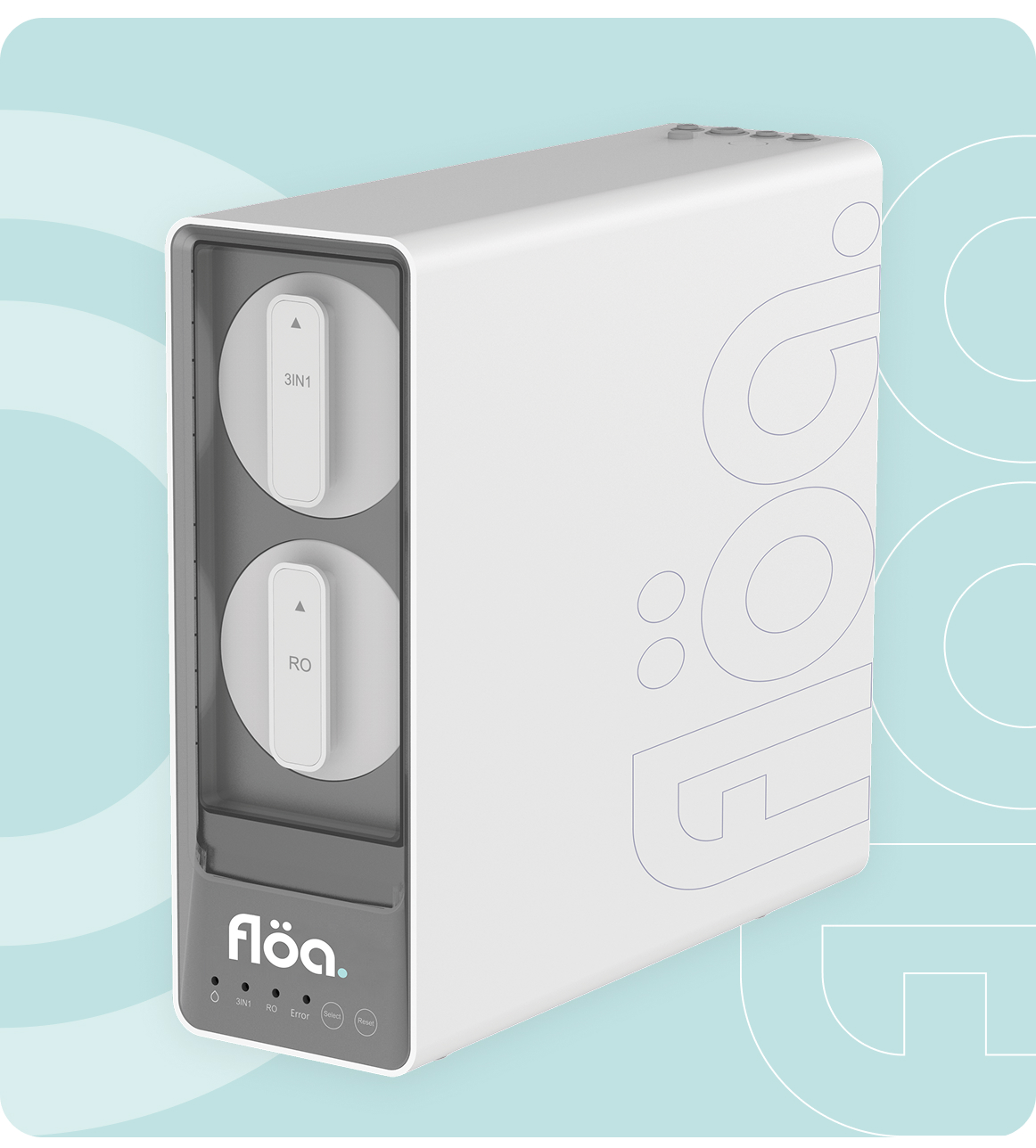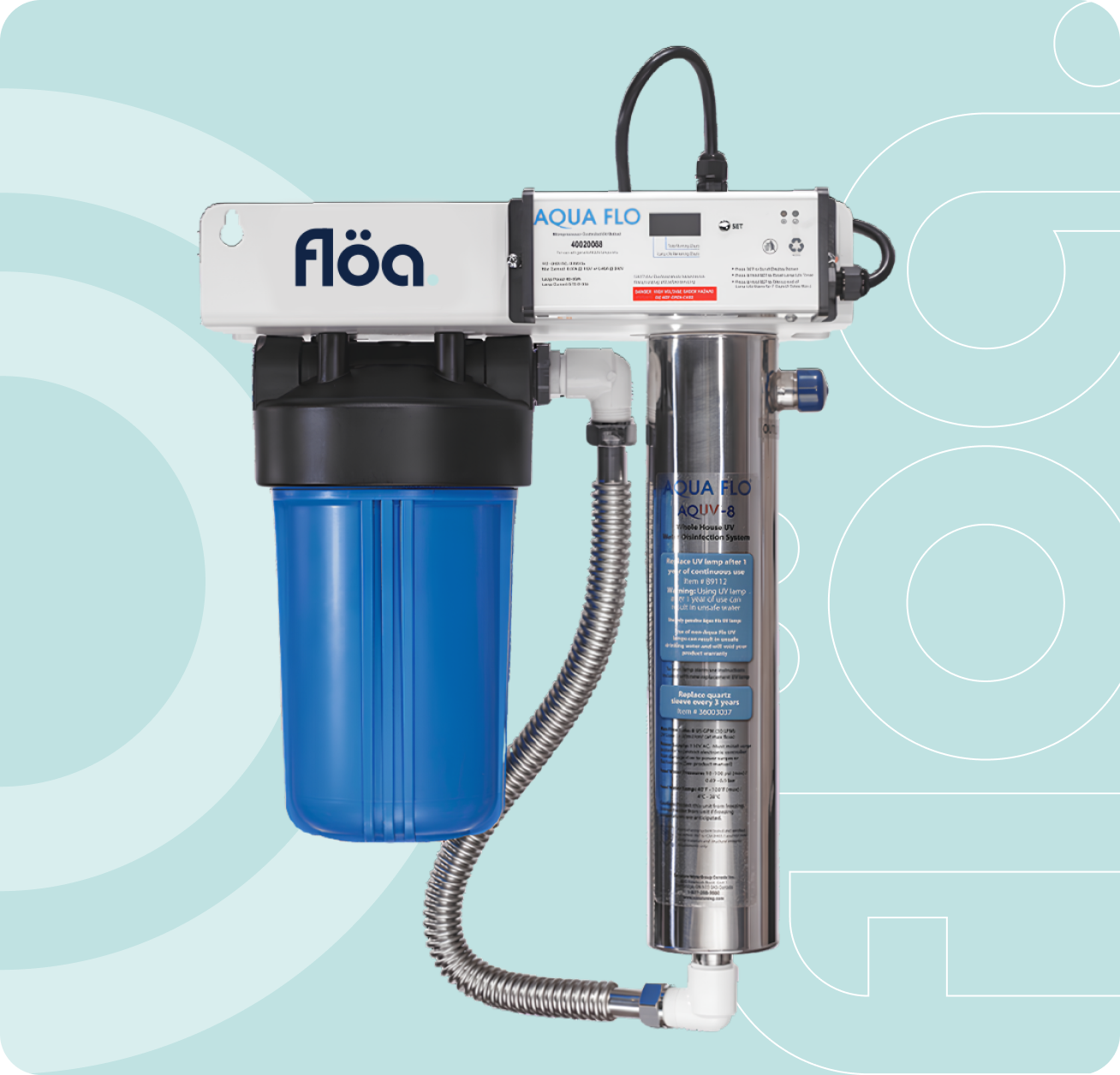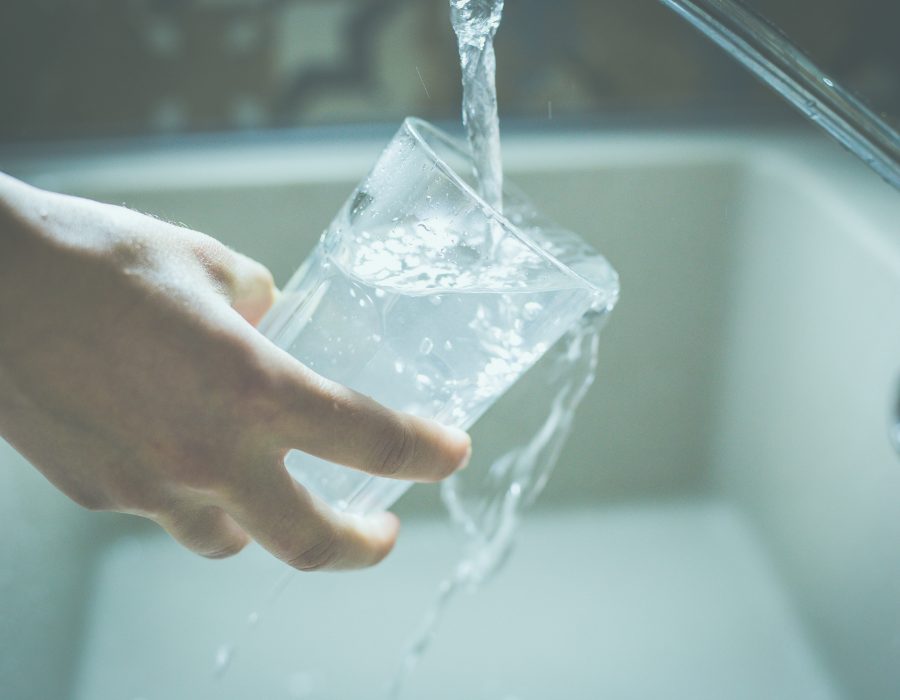What’s really in your tap water? A look at hidden contaminants

Drinking from the tap should feel safe and refreshing… but the truth is, it’s not always that simple. Even treated, municipal water can carry trace impurities that quietly accumulate over time. Here’s what’s lurking in your glass and why it matters.
1. Microplastics & Nanoplastics
Tiny plastic fragments — smaller than your eyelash — have infiltrated water worldwide. A global study found 87% of tap water samples contained microplastics, ranging from 0.03 to over 700 particles per liter. These particles can carry harmful chemicals, lodge in tissues, and even reach organs .
Why it matters: One lab found that drinking bottled water could expose you to 90,000 microplastic particles per year, while switching to filtered tap water cuts that to just 4,000 .
Tip: A boiling-and-filtering method can remove up to 90% of microplastics — but modern multi-stage filtration systems like Flöa do it more effectively and conveniently.
2. Disinfection By-Products (DBPs)
Chlorine and other disinfectants are necessary to kill bacteria but they can also react with organic matter to form by-products like trihalomethanes (THMs) and haloacetic acids (HAAs).
Trihalomethanes (THMs) and haloacetic acids (HAAs) are chemical by-products formed when chlorine (used to disinfect tap water) reacts with natural organic matter like leaves or algae.
What it could do to your body:
Long-term exposure to THMs and HAAs has been linked to an increased risk of bladder cancer, reproductive issues, and liver or kidney damage, according to studies by the U.S. EPA and WHO. Even at low levels, these chemicals may contribute to chronic health problems over time. Filtering your water can significantly reduce this exposure.
Tip: Advanced carbon filtration in systems like Flöa reduces these by-products, improving both safety and taste.
3. Heavy Metals (Lead, PFAS)
Lead remains a persistent threat — remember the Washington D.C. crisis where lead leached into water from old pipes? Even treated water can contain PFAS, also known as “forever chemicals,” used in firefighting foam and industrial processes. In June 2025, a French town banned tap water after finding PFAS contamination above safety thresholds.
Why it matters: PFAS exposure is linked to liver, immune and developmental issues . Lead is well-known to affect neurological development, especially in children.
Tip: High-quality filtration— like reverse osmosis (RO) or multi-stage systems— can remove both lead and PFAS, safeguarding your family's health.
4. Pharmaceuticals & Endocrine Disruptors
Tiny residues of common drugs— like antibiotics, hormones, and painkillers— have been found in drinking water supplies. Many municipal systems aren’t designed to remove these substances.
Why it matters: Although concentrations are low, science still doesn’t fully understand long-term health impacts or how combinations of these compounds affect us.
Tip: Multi-stage filtration systems with targeted membranes can significantly reduce pharmaceutical residues.
5. Invisible Health Risks
Tap water isn’t limited to plastics or chemicals… It may also contain unseen bacteria, pesticides, herbicides, and even industrial runoff. Municipal systems struggle to remove everything, especially with aging infrastructure in some regions.
Tip: Choosing a top-of-the-line home filtration system gives you greater control over water quality, far beyond what typical municipal treatment provides.
🧠 Bottom Line: Why You Should Care

Whether you’re a family with kids, a health-conscious individual, or someone who loves delicious, clear water, Flöa’s advanced filtration systems are designed to protect your health, enhance taste, and give you peace of mind every time you pour a glass.
Curious about how Flöa tackles these contaminants? Explore our Whole-House, Under‑Sink, and Shower‑Only solutions to find the system that fits your lifestyle and your standards.










.jpg)



